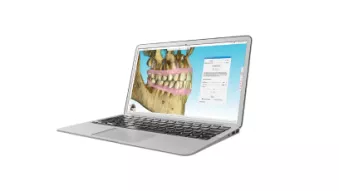Case Study: Using Alternative Treatment Plans to Achieve Patient Harmony.
Dr. Michael Bicknell, DDS, MS
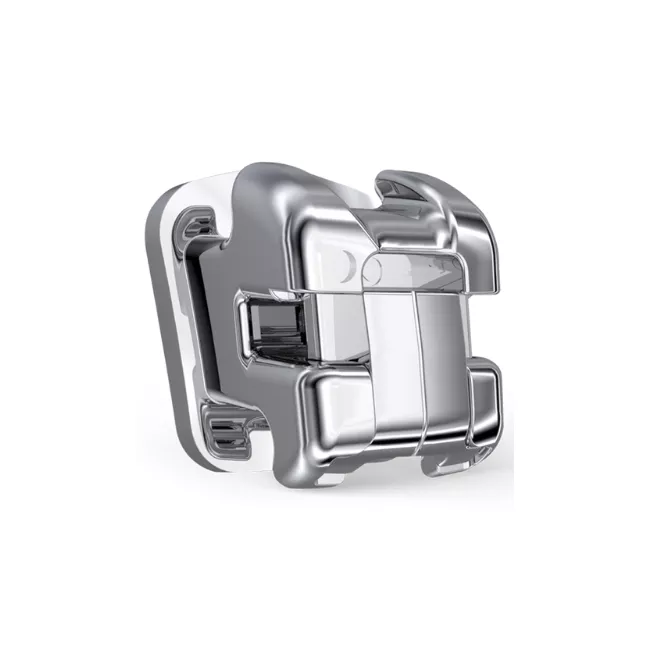
In today's dynamic orthodontic market, patients are presented with a plethora of options for their orthodontic care needs.
To stand out as the clear and preferred choice, orthodontic specialists must deliver superior outcomes and elevate the patient’s experience. Fortunately, we now have access to remarkable innovations that can serve as valuable tools in achieving these goals. By harnessing these cutting-edge technologies alongside a commitment to ongoing learning and skill refinement, we can streamline our processes, reduce treatment durations, and enhance the overall patient journey. This formula allows us to excel in producing exceptional results and ensuring remarkable patient experience. In the competitive landscape of orthodontic care, it is this combination of outstanding patient outcomes and a memorable experience that will continue to set orthodontic specialists apart from other options, both now and in the future.
Reflecting on the early stages of my clinical career, I was fortunate to receive guidance from a diverse group of instructors, each with their unique techniques and insights. In today's information-rich environment, we not only have the opportunity but also a responsibility to pursue better techniques that deliver the highest quality of care to our patients. My introduction to passive self-ligation (PSL) was a turning point, as I was captivated by the beautiful smiles and artistic finesse that I hadn't achieved in my previous cases. These remarkable results initially drove my adoption of PSL. Later, I realized that PSL not only delivered stunning smiles but also offered increased efficiency, reduced sensitivity, and an overall improved patient experience.
As orthodontists, we sometimes find ourselves in situations where our ideal treatment plans are met with resistance from patients or their parents for various reasons. This can create stress as we contemplate altering our recommendations to accommodate their preferences, all the while harboring concerns about achieving our desired treatment outcomes. The following two cases illustrate departures from the original treatment plans due to strong objections from patients and showcase the transformative power of gentle forces, anterior torque control, and transverse dental development in addressing crowding and Class II correction. Ultimately, the final results not only met the initial treatment objectives but also left our patients delighted with their outcomes.
Case 1 - A Journey Towards an Ideal Smile
Diagnosis:
An 11½-year-old male presented with a Class II Division 1 malocclusion featuring severe maxillary crowding and moderate mandibular crowding. The patient exhibited a convex facial profile with a retrusive mandible, thin lip structures, tapered buccal segments, and a compromised smile arc due to inadequate incisor display during smiling.
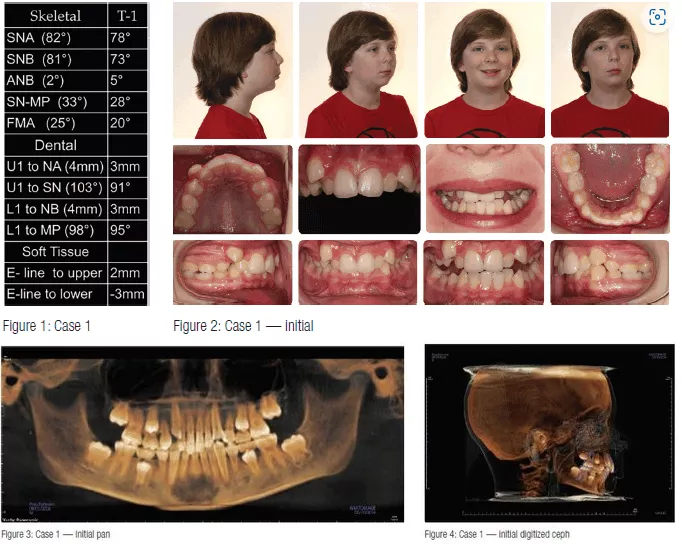
Objectives/Plan:
Our goals were to create space for the upper central incisors (U3's) while maintaining maxillary incisor position, achieve Class 1 molars and canines, enhance the smile arc by erupting incisors, and promote posterior segment development for increased arch length and improved smile width. Initially, a Herbst appliance was proposed to address the Class II malocclusion, but it was declined by the parent. Therefore, passive self-ligation with Class II elastics became the chosen treatment plan.
Case Progression:
The treatment involved a series of visits and wire changes, along with the strategic use of Class II elastics. Key milestones included bracket placement, wire changes, and the bonding of U3's. The patient's compliance with 2 oz. 3/16 Class II elastics played a pivotal role in achieving the desired results. This efficient treatment plan was completed in just 18 months with 12 visits.
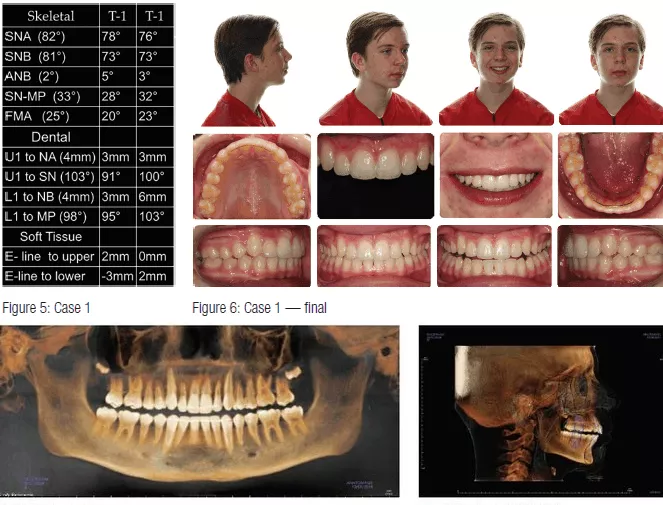
Overview:
The Damon Q passive self-ligation system successfully corrected the Class II malocclusion, facilitated significant arch development, and improved maxillary incisor position while maintaining angulation. This case not only showcased clinical effectiveness but also highlighted the patient's cooperation, resulting in a streamlined and successful treatment experience.
Case 2 - Achieving Harmony and Functionality
Diagnosis:
A 28-year-old female presented with a Class II Division 1 malocclusion characterized by moderate maxillary crowding and mild mandibular crowding. The absence of mandibular first molars due to previous extractions as a child had led to mesial tipping of the second molars. Additionally, maxillary left first molar over-eruption was observed. The patient exhibited a convex facial profile with well-positioned mandible, protruded and proclined maxillary incisors, protruded lower incisors, and a compromised smile arc.
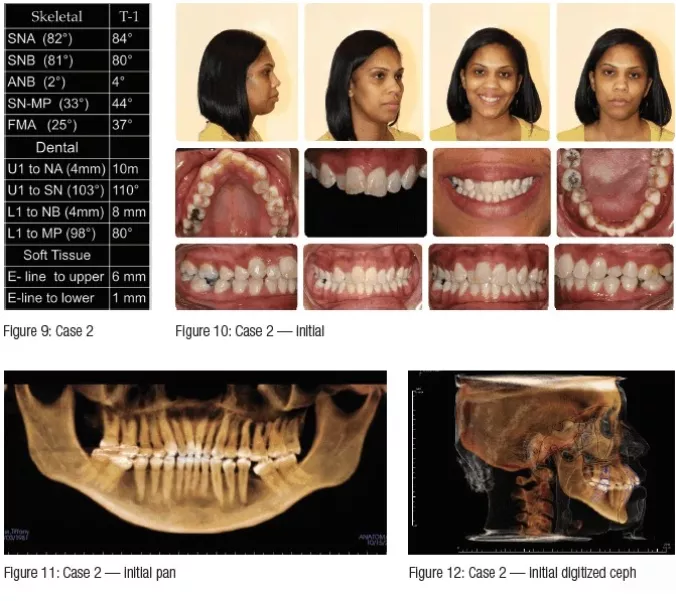
Objectives/Plan:
Our objectives were to improve maxillary incisor position through retraction, achieve Class I canines, enhance the smile arc by erupting incisors, and develop posterior segments for improved smile width. The initial plan involved extracting upper first molars (U4's) to address overjet and retract incisors. However, due to the patient's negative past experience with extractions, this approach was declined. Instead, a non-extraction plan using passive self-ligation with Class II elastics and temporary anchor devices (TADs) was adopted.
Case Progression:
The treatment journey included a series of visits, wire changes, and TAD utilization to protract the mandibular posterior segments and intrude the maxillary left first molar. Class II elastics were integral to the process. Notably, the patient's cooperation and adherence to the 2 oz. 3/16 Class II elastics contributed to the successful outcome. This comprehensive treatment plan spanned 23 months and required 13 visits.
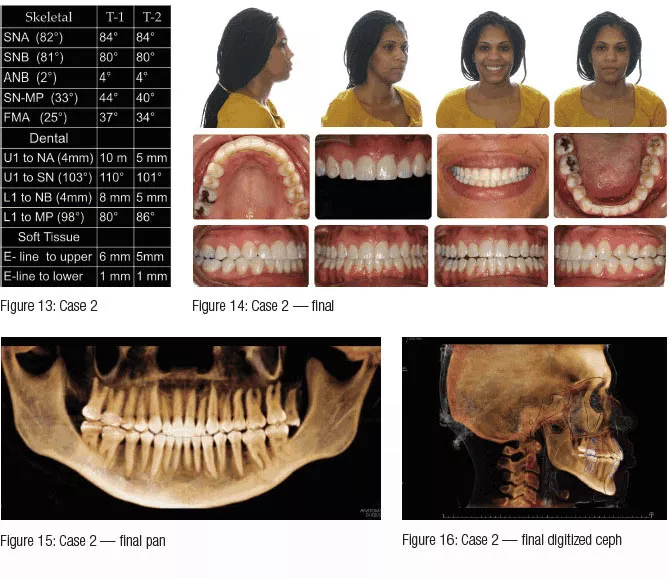
Overview:
The Damon Q passive self-ligation system effectively corrected the Class II malocclusion, improved maxillary incisor position, and facilitated substantial arch development. The combination of Class II elastics and TADs played a crucial role in achieving these results. Patient compliance and the use of advanced techniques resulted in an efficient and successful treatment experience.
These two cases exemplify the predictability and effectiveness of the Damon System. Benefits such as significant transverse arch development, Class II correction with gentle elastics, and precise torque control of incisors were evident. The use of this system translated into shorter treatment durations, fewer appointments, and reduced discomfort, ultimately enhancing the overall patient experience. The introduction of Damon Q2 brackets, offering improved precision and predictability, further underscores the system's treatment efficiency. As the orthodontic market continues to evolve, providing outstanding outcomes and an enhanced patient experience will set orthodontic specialists apart as the optimal choice for orthodontic treatment. In this pursuit, the Damon System remains a valuable ally in achieving excellence in orthodontic care.

